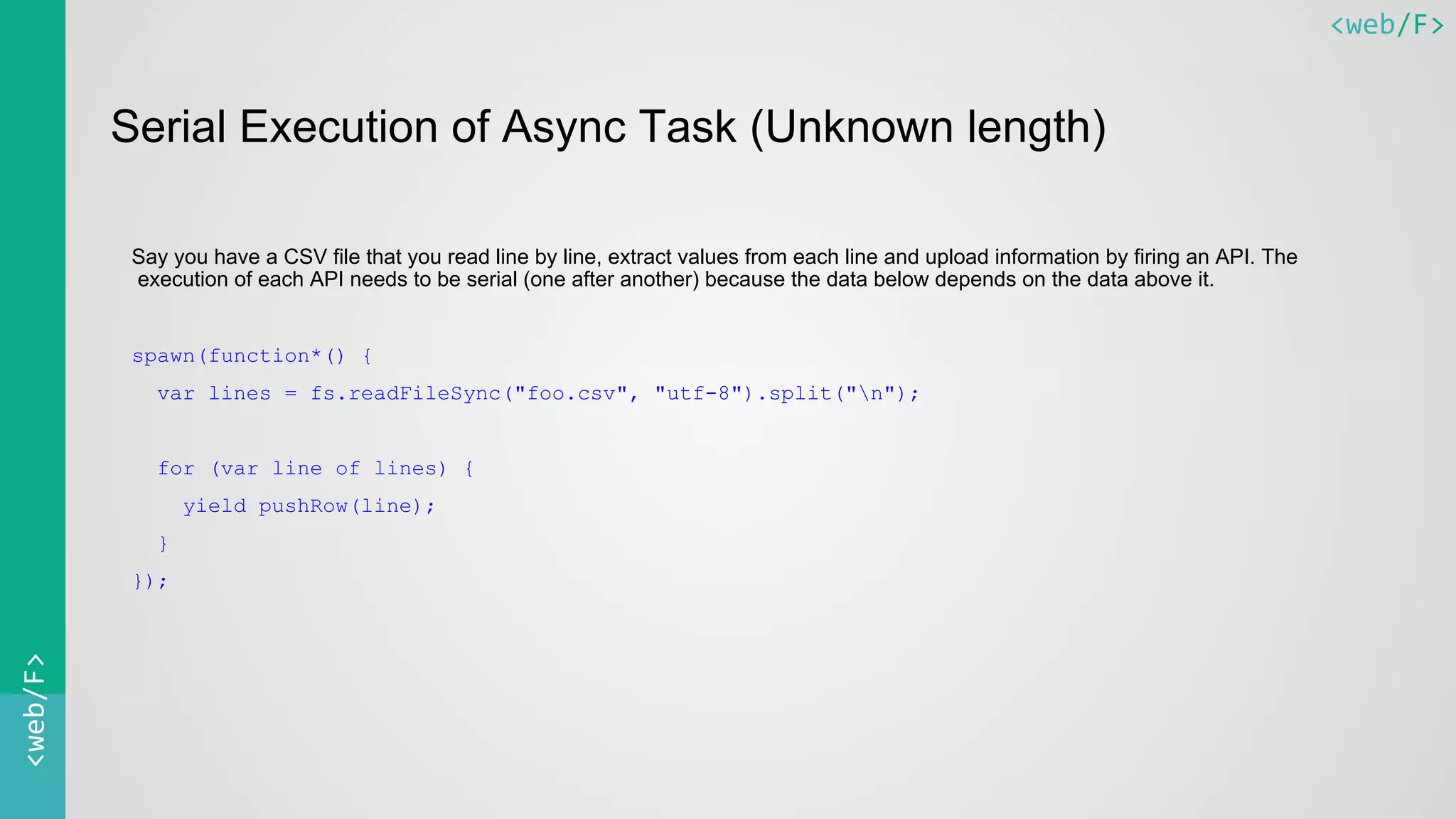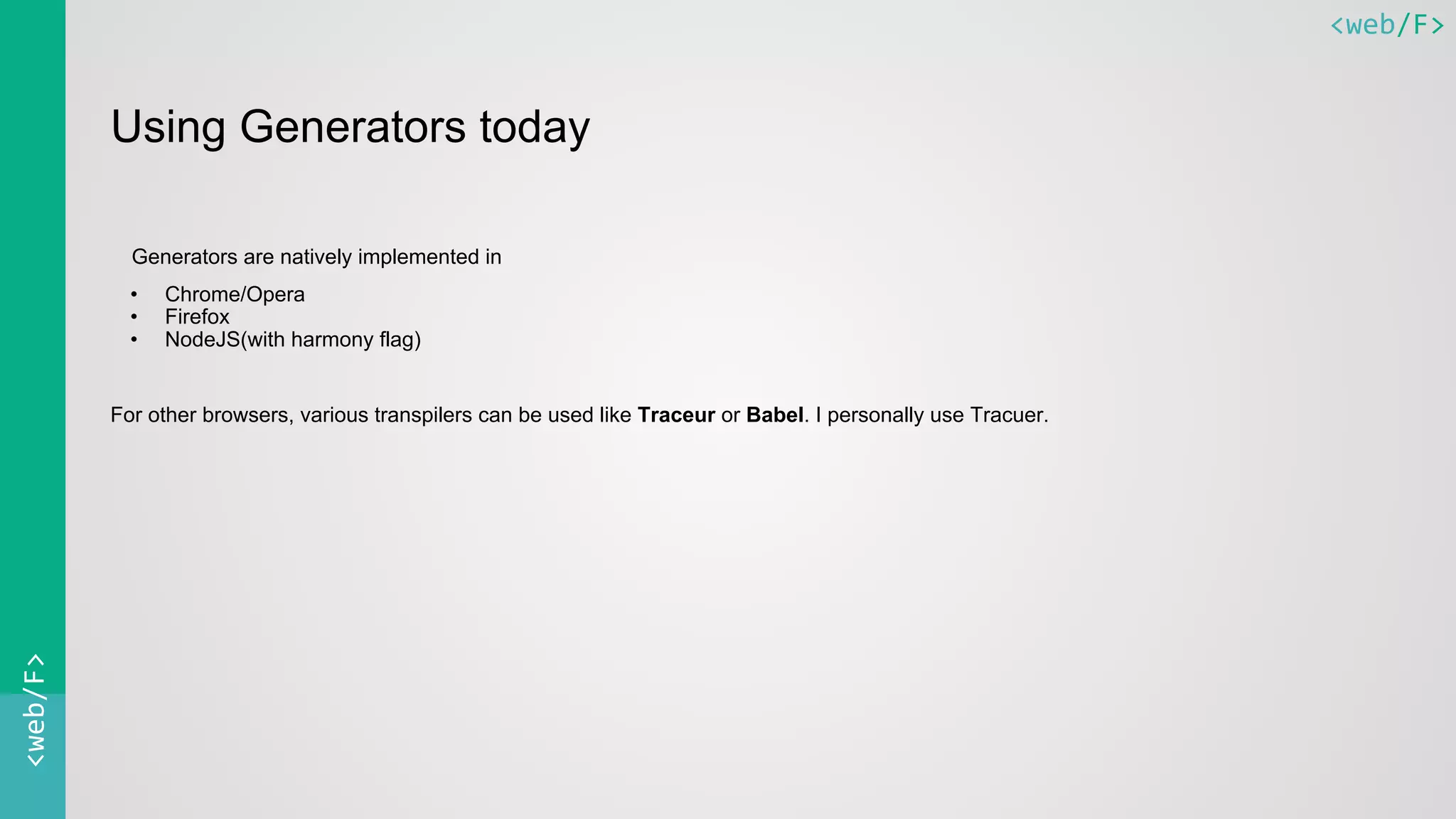This document discusses approaches for handling asynchronous programming in JavaScript. It begins by introducing common asynchronous APIs and the problem of "callback hell". It then discusses using promises as an improvement over callbacks by allowing sequential code flow. However, promises still require "then" calls and don't handle conditional flows well. Generators are introduced as another approach that allows writing asynchronous code sequentially using yield within generator functions. This approach avoids callback hell and reads similar to synchronous code while still handling asynchronous operations.

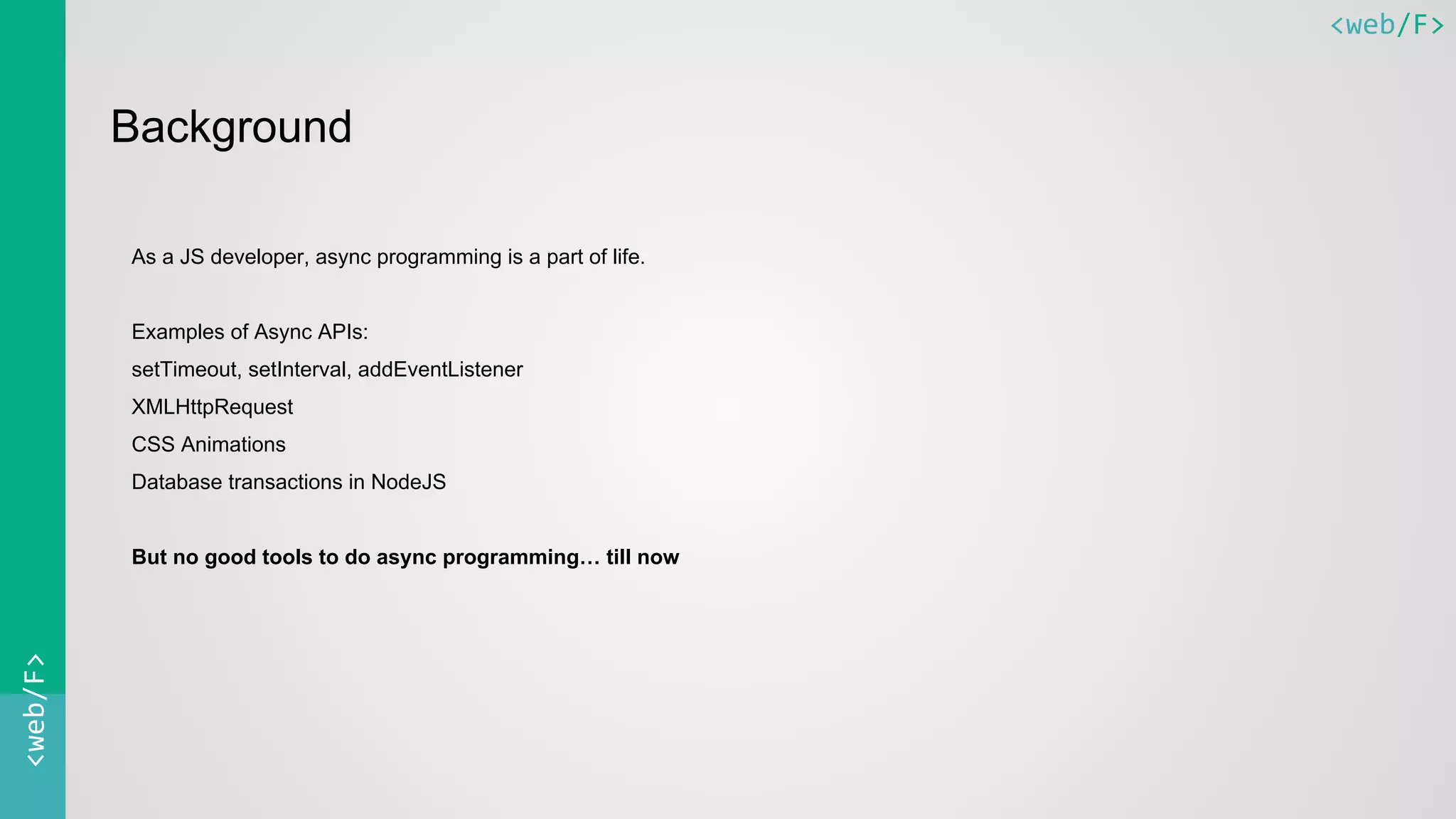
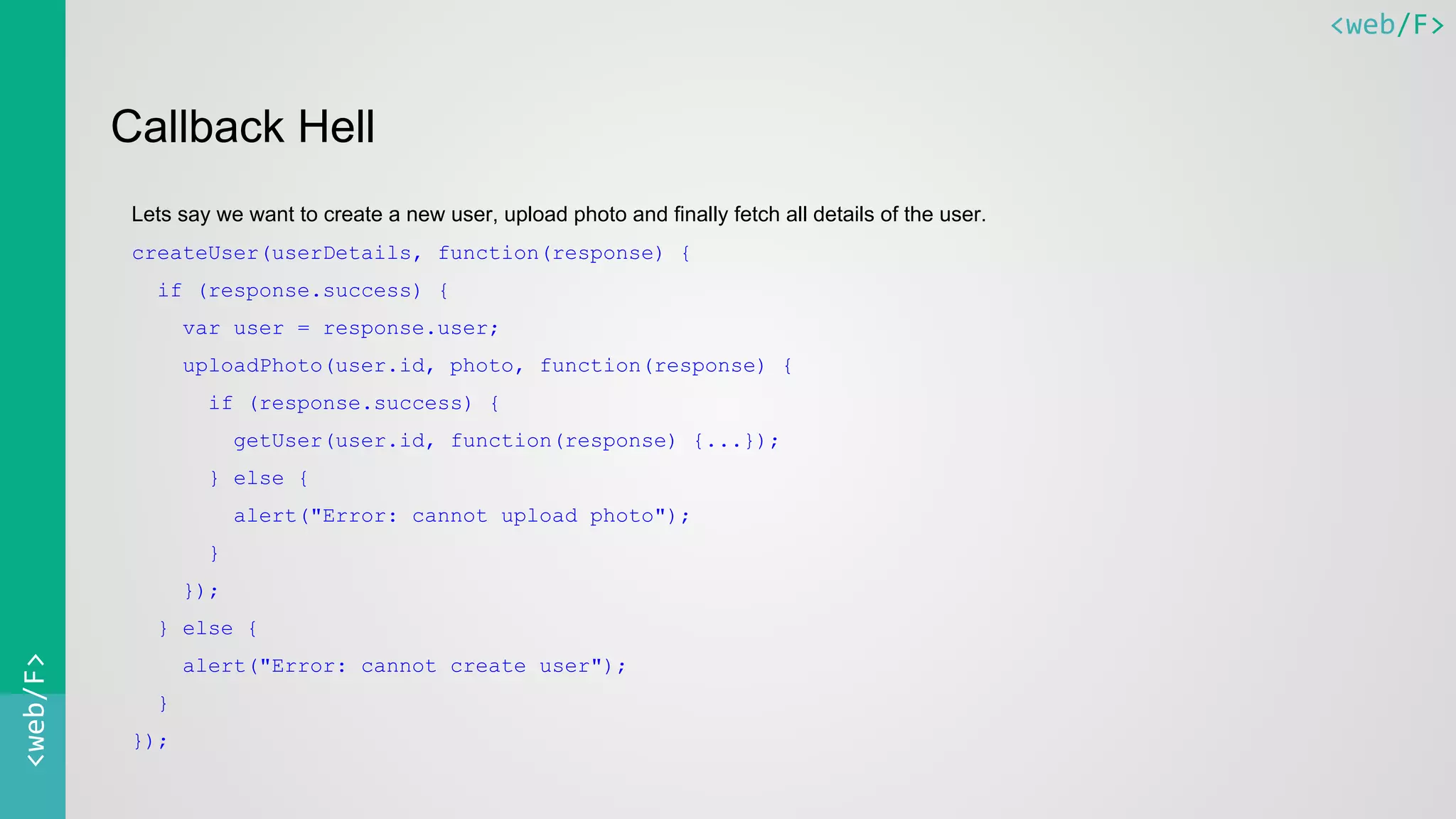
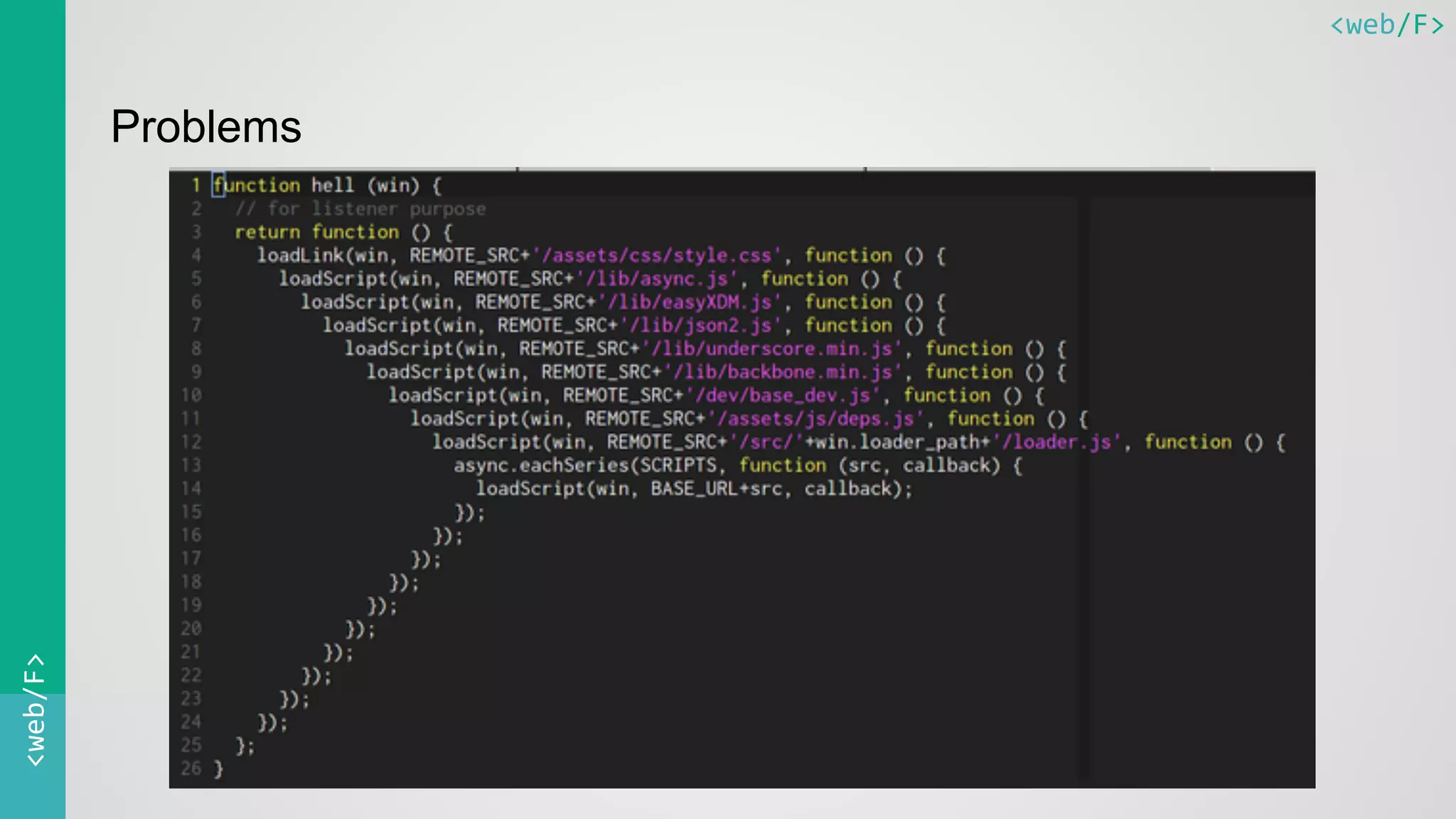
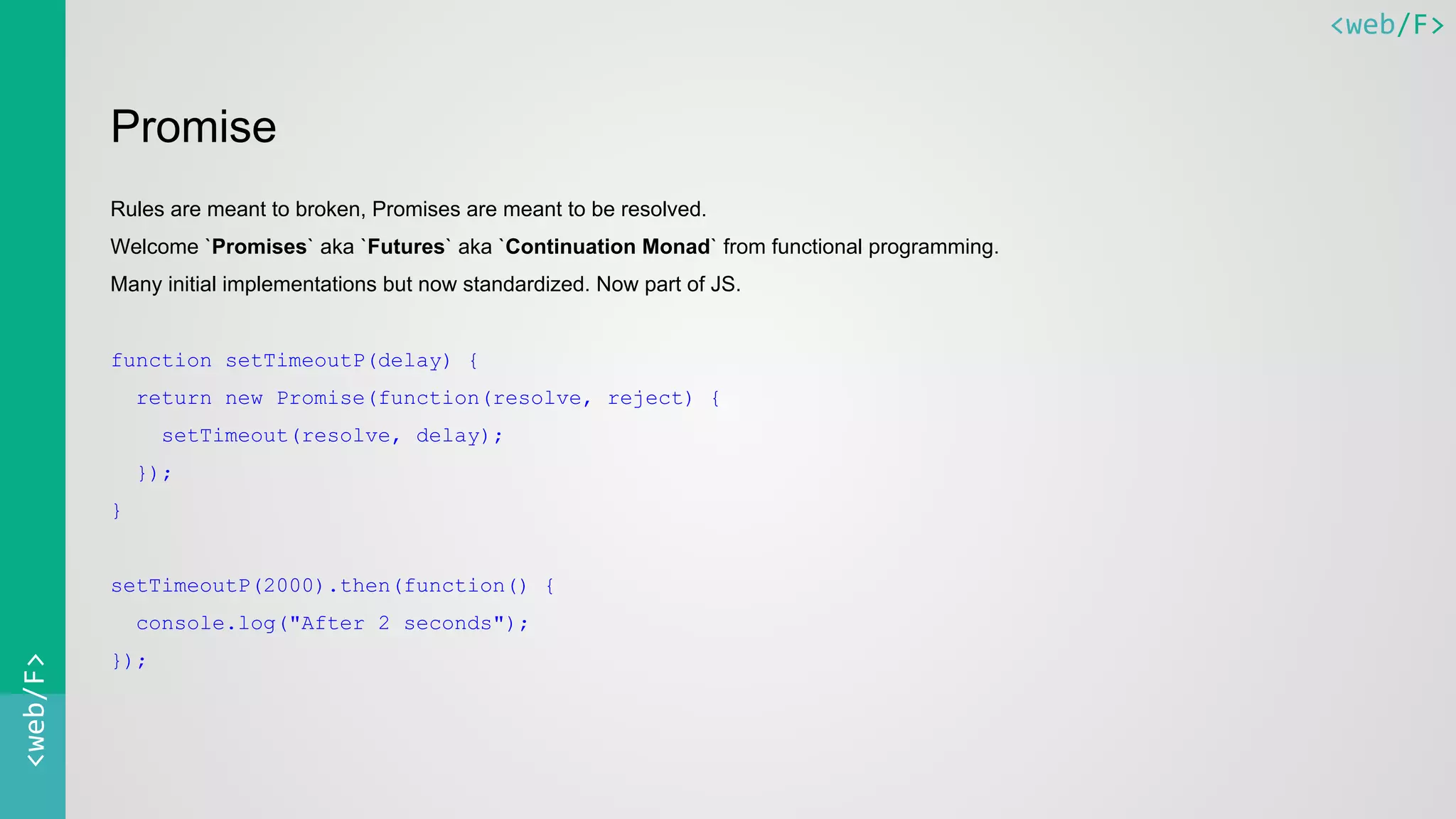
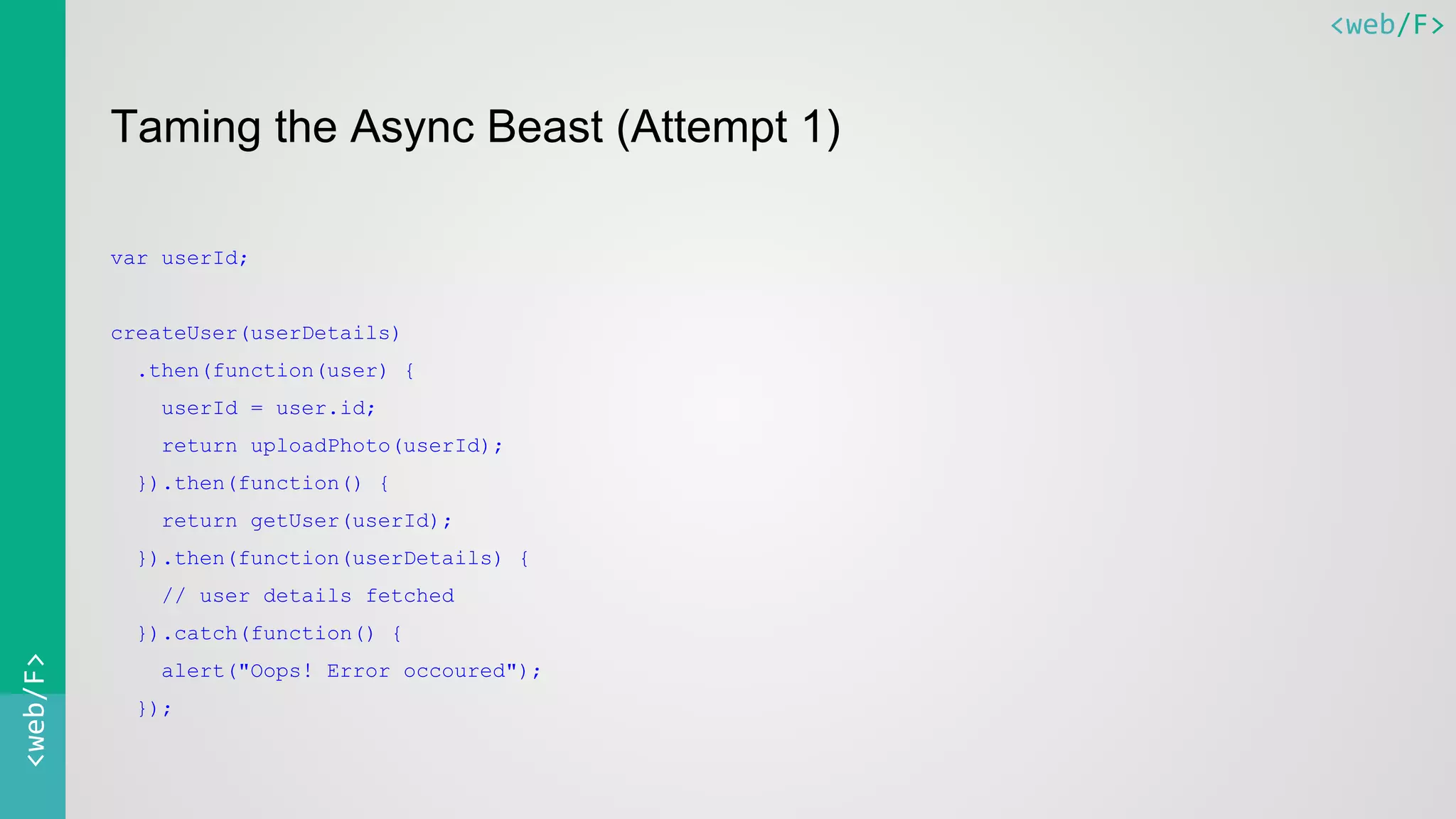
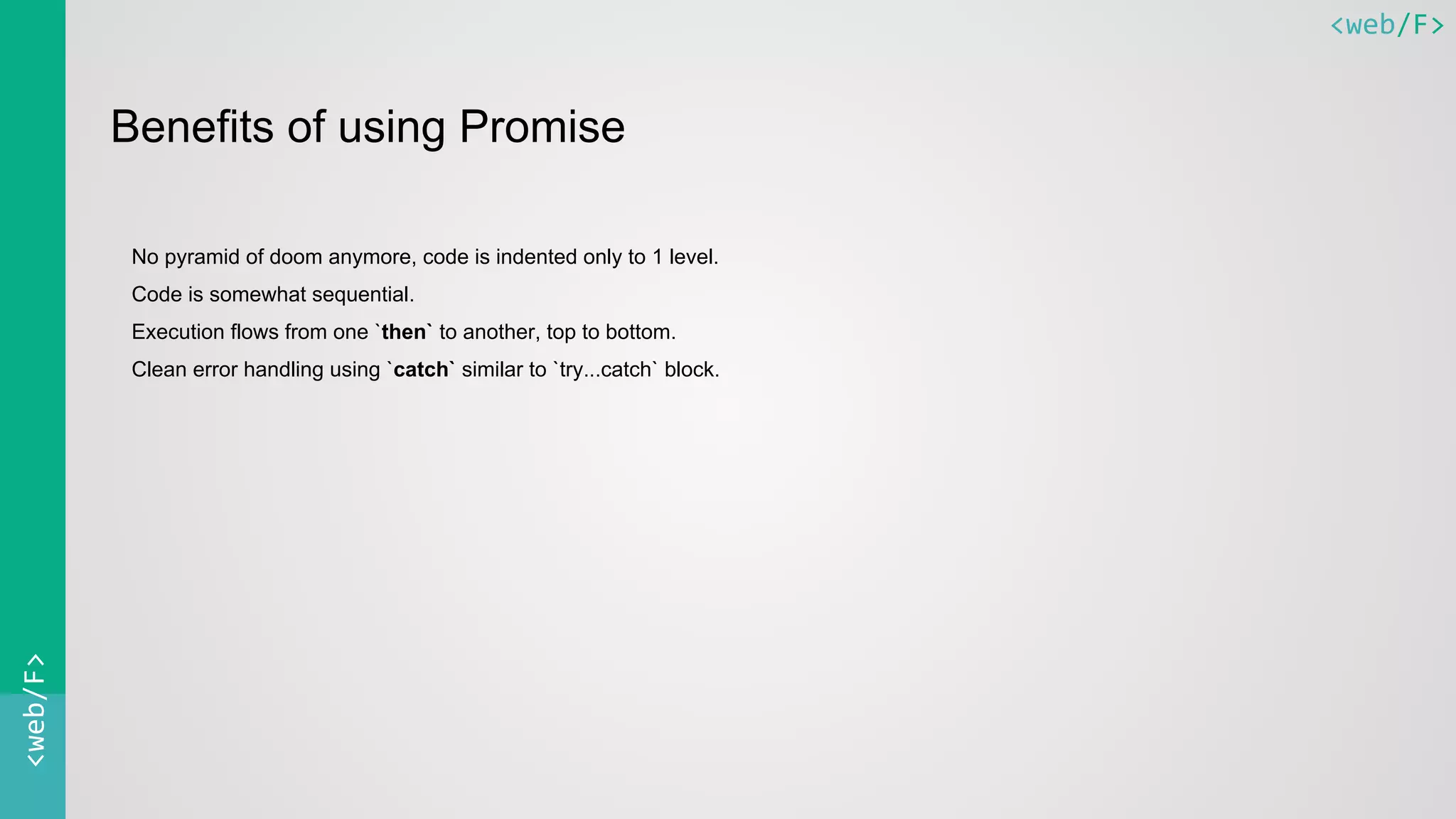
![<web/F><web/F>
Parallel execution using Promises
Usecase: Edit User Information page
var userDetailsPromise = getUser(userId);
var occupationValuesPromise = getOccupationValues();
Promise.all([userDetailsPromise, occupationValuesPromise])
.then(function(args) {
var userDetail = args[0];
var occupationValues = args[1];
// fill the UI elements here
});](https://image.slidesharecdn.com/asyncprogramming-150811175022-lva1-app6892/75/Asynchronous-Programming-with-JavaScript-8-2048.jpg)
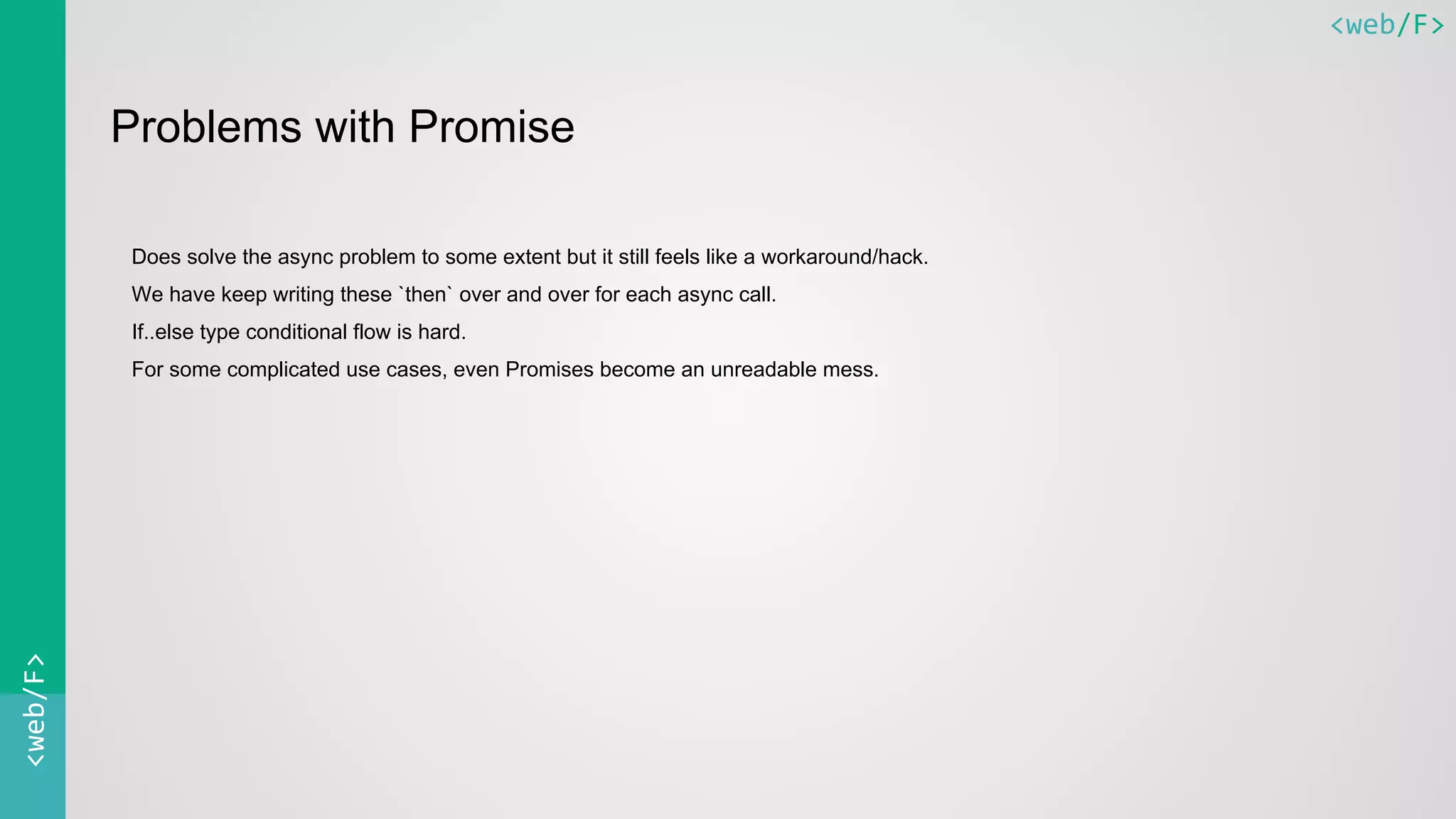
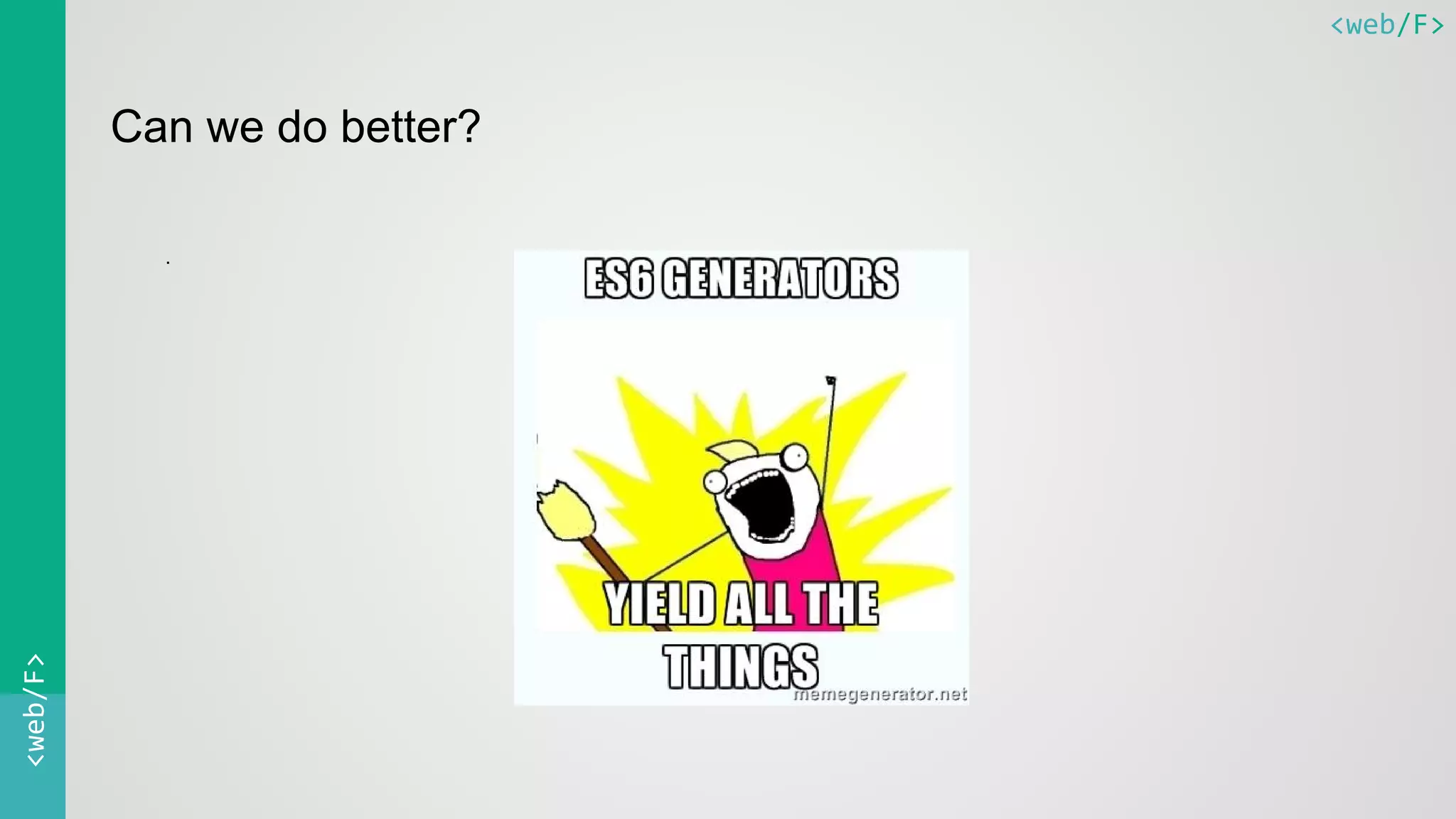
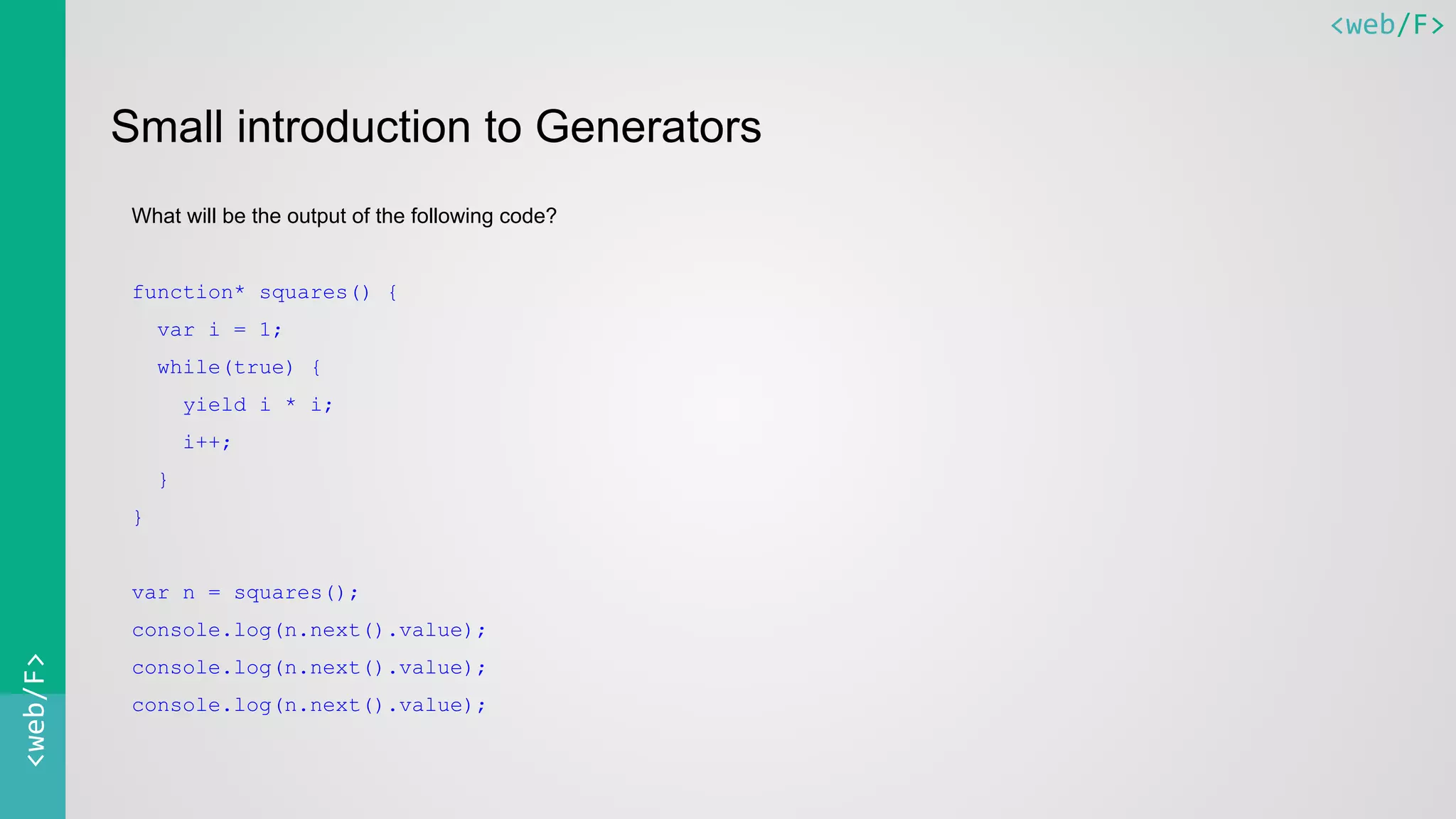
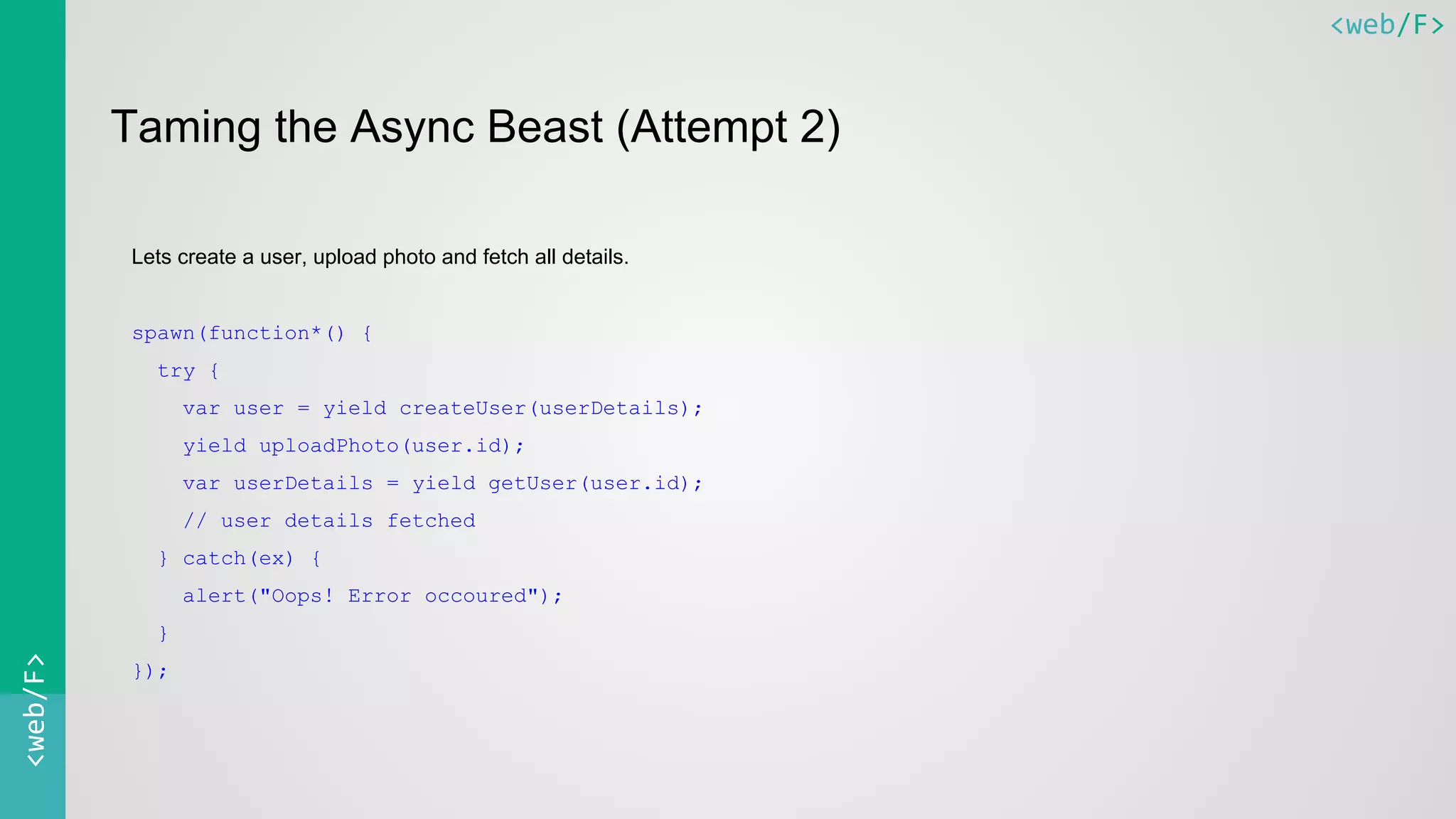
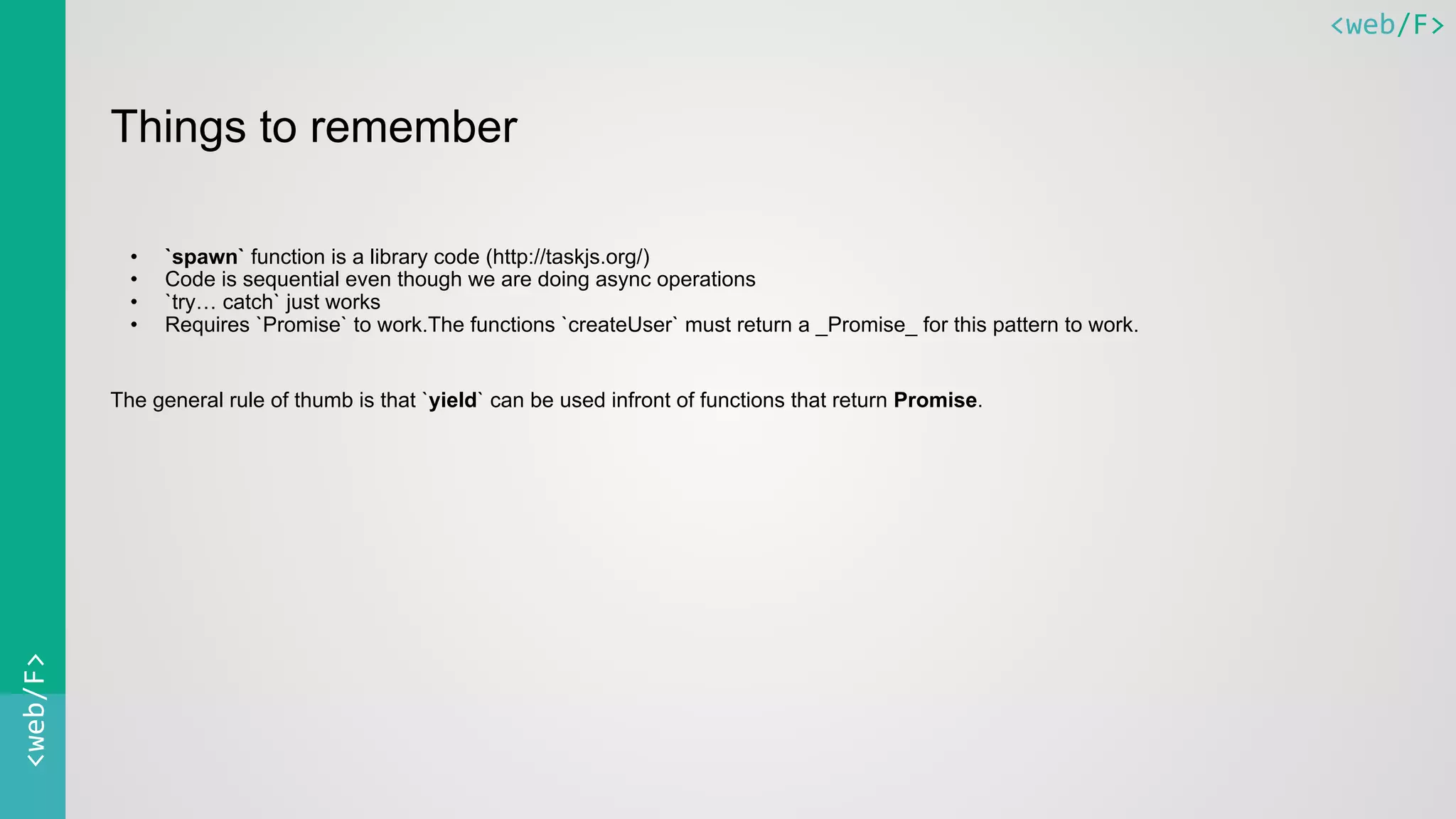
![<web/F><web/F>
Parallel execution
spawn(function*() {
var values = yield [getUser(userId), getOccupationValues()];
var userDetailsPromise = values[0];
var occupationValuesPromise = values[1];
});
The way to think about this is, whatever you can pass to `Promise.all` can be passed to `yield`.](https://image.slidesharecdn.com/asyncprogramming-150811175022-lva1-app6892/75/Asynchronous-Programming-with-JavaScript-14-2048.jpg)
